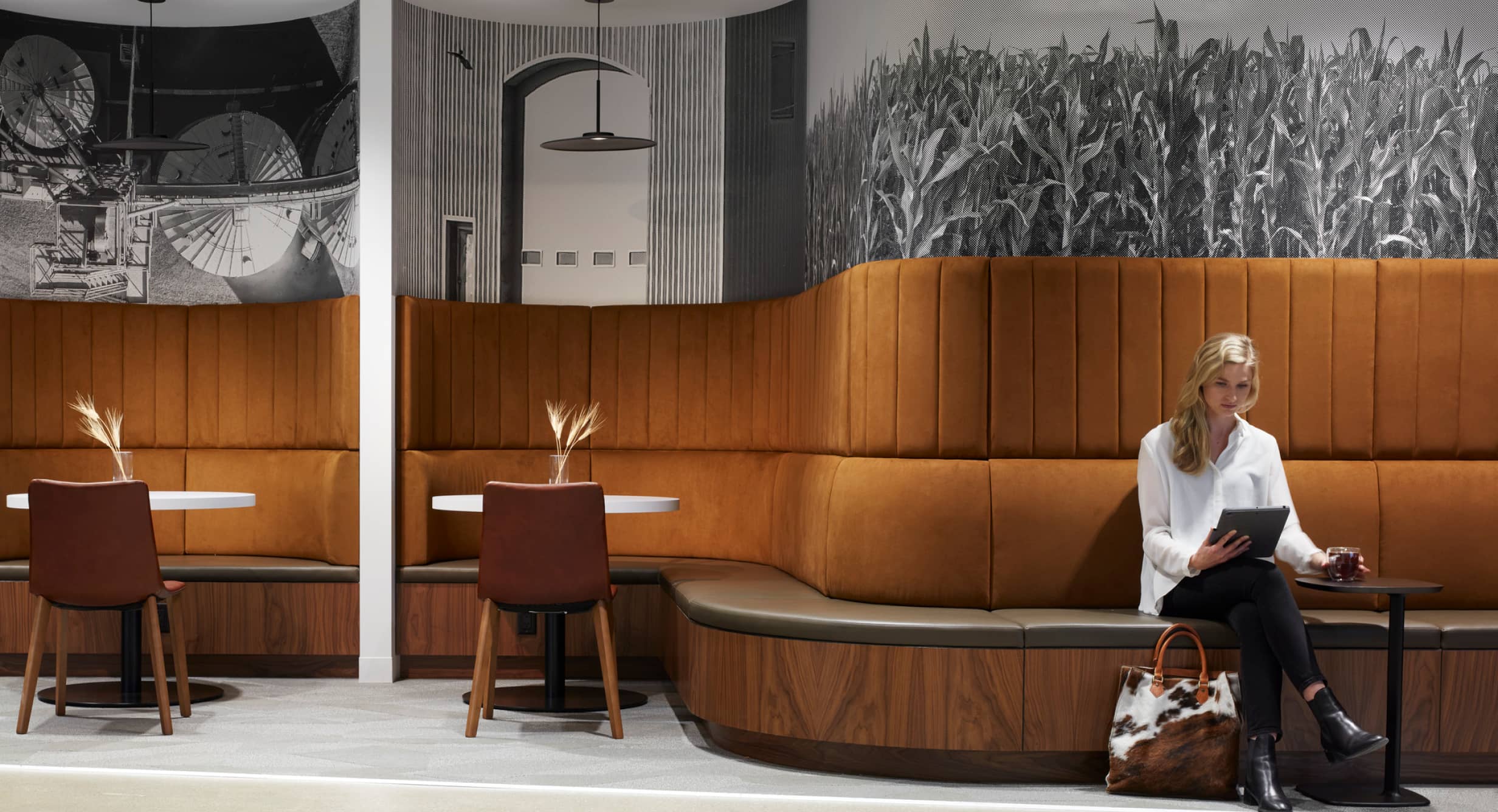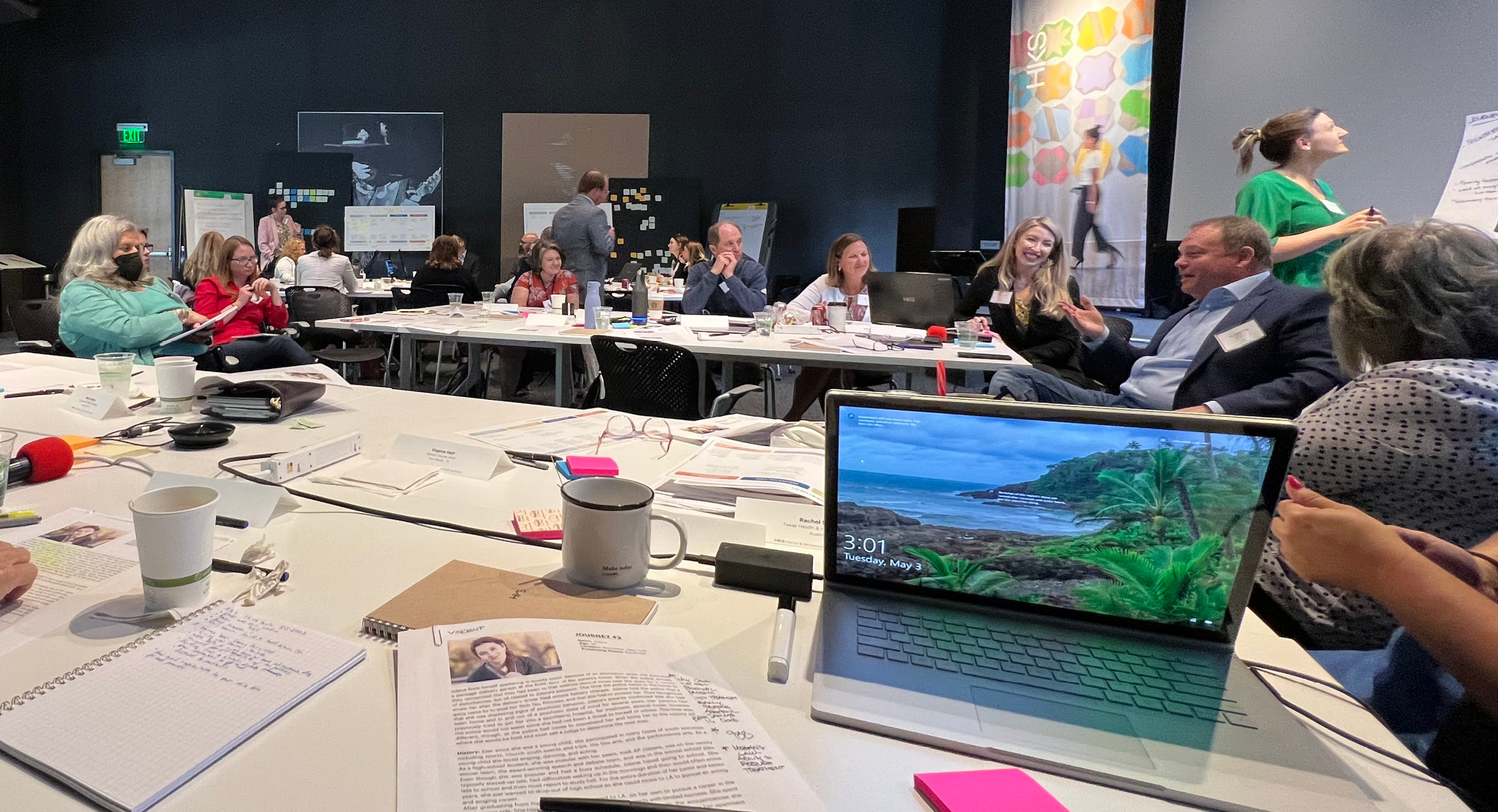
How Do Built Environments Help Build Brain Capital?
- Upali Nanda, PhD
- Julie Hiromoto
For the past two years, HKS researchers, designers and innovators have been working diligently on expanding our thinking about health and well-being to encompass brain health.
The World Health Organization defines brain health as “the state of brain functioning across cognitive, sensory, social-emotional, behavioral and motor domains, allowing a person to realize their full potential over the life course, irrespective of the presence or absence of disorders.” Another compelling definition in the British Medical Journal holds that brain health is “the preservation of optimal brain integrity and mental and cognitive function and the absence of overt neurological disorders.”
Brain health allows us to hyperfocus on the fundamental building block of human cognition and functioning — the human brain — and design environments that support and enhance it.
There is a strong economic imperative to focus on brain health. Our current global economy is often described as a “brain economy” where many new jobs demand cognitive, emotional, and social skills. Innovation is now considered a tangible outcome related to employee productivity. As automation increases, a premium is being placed on cerebral, brain-based skills that make us human such as self-control, emotional intelligence, creativity, compassion, altruism, systems thinking, collective intelligence, and cognitive flexibility.
Enter “brain capital,” an emerging imperative that pulls together brain health, brain skills, and concepts of the brain economy to enable people to realize their potential as productive members of society. It is being advanced by the Brain Capital Alliance, a public-private-people partnership to optimize the brain, brain health and brain skills in our modern economy.
The shift to brain capital in our thinking makes us pose this critical question: What if we could optimize our brains — not only to improve mental and physical health — but also to contribute to positive social and economic benefits that would increase individual and community well-being and advance our societal goals?
The 17 United Nations Sustainable Development Goals (SDGs) are broad-reaching and holistic outcomes that require integrated, system-based solutions. Brain health and brain capital are clearly related to SDG3 (Good Health and Well-being), but it also intrinsically tied to SDG4 (Quality Education), SDG8 (Decent Work and Economic Growth), SDG9 (Industry, Innovation and Infrastructure), SDG10 (Sustainable Cities and Communities), SDG13 (Climate Action), SDG16 (Peace, Justice and Strong Institutions) and SDG17 (Partnerships for the Goals).
Through the innovation and creativity unlocked by a workforce and youth population empowered with brain healthy habits, we will make significant progress on all 17 SDGs. A new brain capital economy will require bridging previously siloed disciplines and expertise to understand, test and draft policy to assess and incentivize the outcomes we desire.
At the upcoming Science Summit at the United Nations General Assembly, we will convene a full day event focused on youth mental health, workforce development, economic security and resilience, sustainable futures, brain + building, neuro-science law, and food systems. Advocates, neuroscientists, medical doctors, psychologists and designers will lead conversations along-side academics, business leaders, elected officials, policy experts and real estate financers, owners and operators. The brain capital economy will help us amplify and institutionalize innovation to date, while also creating a platform to accelerate creative approaches for the next frontier.
As researchers and designers of the built environment, we know that places and spaces have a big impact on how we can build brain capital and realize the SDGs. Here are five things we encourage our teams, clients, and partners to do as we kick-start the journey to design for brain capital:
1. Explore the intersection between neuroscience and architecture to unlock new ideas for design.
In the emerging field of neuro-aesthetics (a movement started by the Academy of Neuroscience and Architecture), a growing evidence base links environmental factors directly to brain behavior. Air quality impacts cognitive health, access to nature reduces stress and anxiety, novelty in environments can improve memory, exposure to arts can activate dormant synapses in the brain — the list linking design to brain health outcomes is long — and growing every day. Designers can catapult pieces of evidence into channels for transformational change through the enriched environments they design and build
2. Invest in your own brain capital through brain-healthy workplaces.
A disproportionately large portion of our life is spent at work. Work, especially in the brain economy, relies on brain health. Invest in design and operational best practices that make your workplaces healthy for your brain.
3. Build your and your team’s cognitive fitness with the same passion as you build physical fitness.
We often think about our diet and exercise for physical fitness, but we need to be intentional about our mental, social and cognitive fitness, too. Connect with people, spend time doing creative tasks that push your thinking, learn new things, and consider brain health training programs such as SMART from the Center for BrainHealth to build your capacity.
4. Think of every capital investment as a project for brain capital.
Think about a design project you might be working on — a school, an office, a hospital, a hotel, a housing development or a new neighborhood — and then place a brain capital lens on it. Are brain health and brain skills important to the project’s outcomes? Could investment in people’s well-being lead to economic benefits? How can you create an environment that gets to the core of how someone learns, heals, relaxes, lives and flourishes? These questions will help you unlock design potential for exponential impact.
5. Dissolve disciplinary silos to work with scientists, economists, environmentalists, artists and policy makers.
The fundamental premise of brain capital is bringing professionals from a wide range of expertise together to make bold, systemic change. And that starts with creative convenings beyond disciplines.
Imagine a future where everyone has opportunities to fulfil their potential — at home, at work, in any place at any time. If we work together to invest in building brain capital, we can create a regenerative world where creativity and innovation thrive and life flourishes.
References:
• A Brain Capital Grand Strategy: toward economic reimagination. By Smith, Erin; Ali, Diab;
Wilkerson, Bill; Dawson, Walter D; Sobowale, Kunmi; Reynolds, Charles; Berk, Michael; Lavretsky, Helen; Jeste, Dilip; Ng, Chee H; Soares, Jair C; Aragam, Gowri; Wainer, Zoe; Manji, Husseini K; Licinio, Julio; Lo, Andrew W; Storch, Eric; Fu, Ernestine; et al.
• World Health Organization Health Topics: Brain Health
• What is brain health and why is it important? By Wang, Yongjun; et. al





